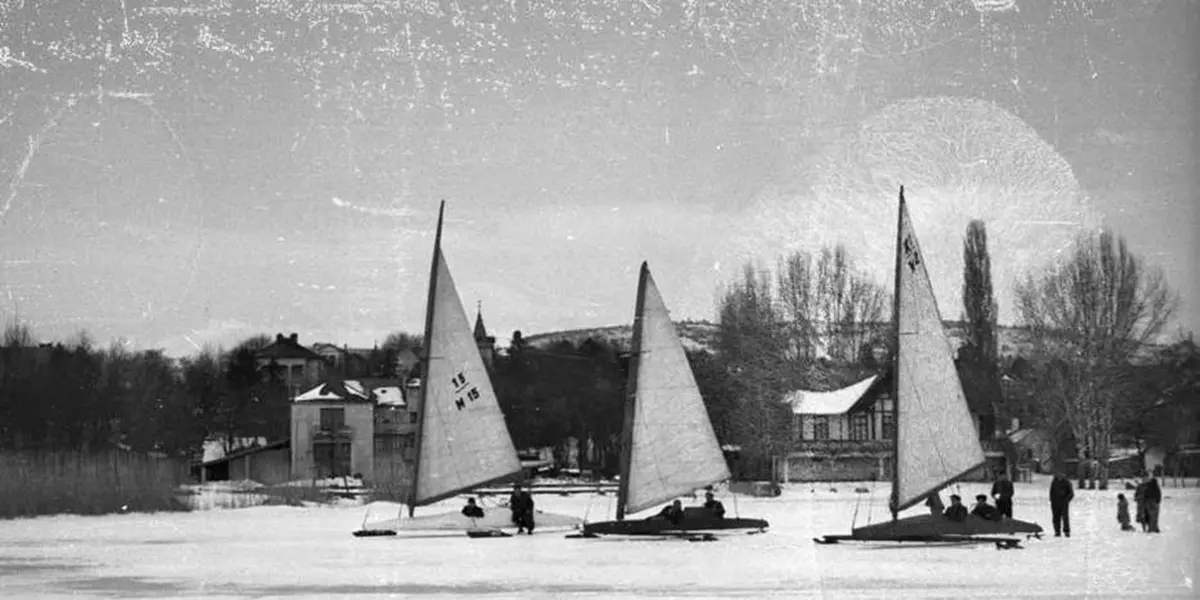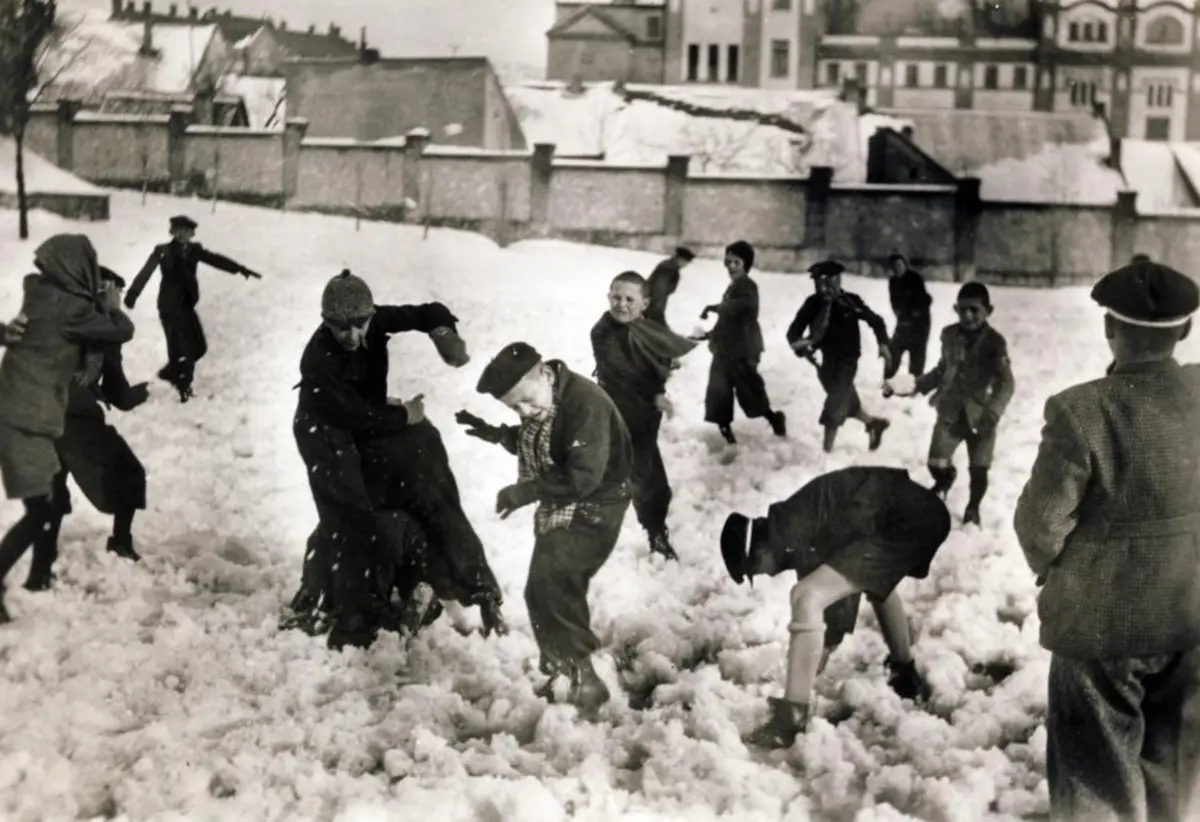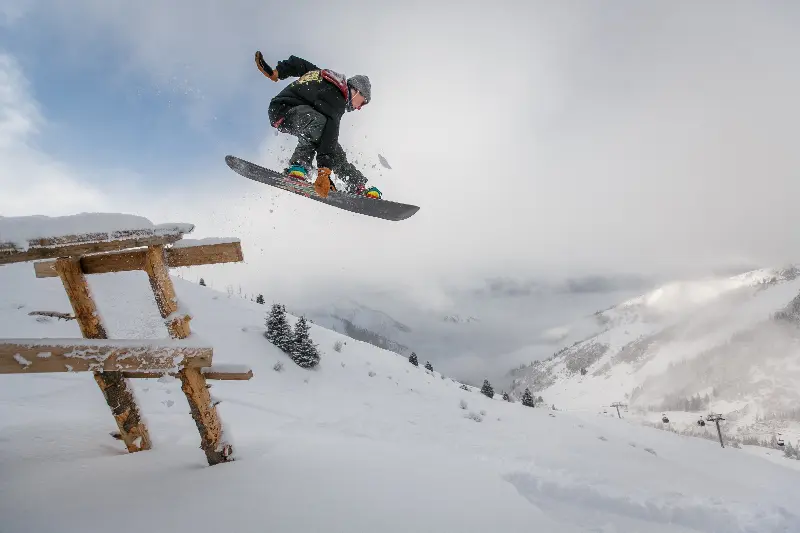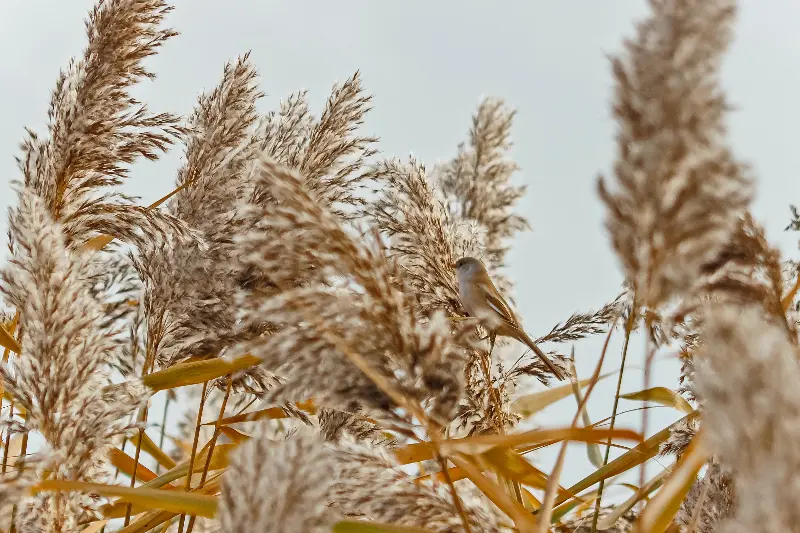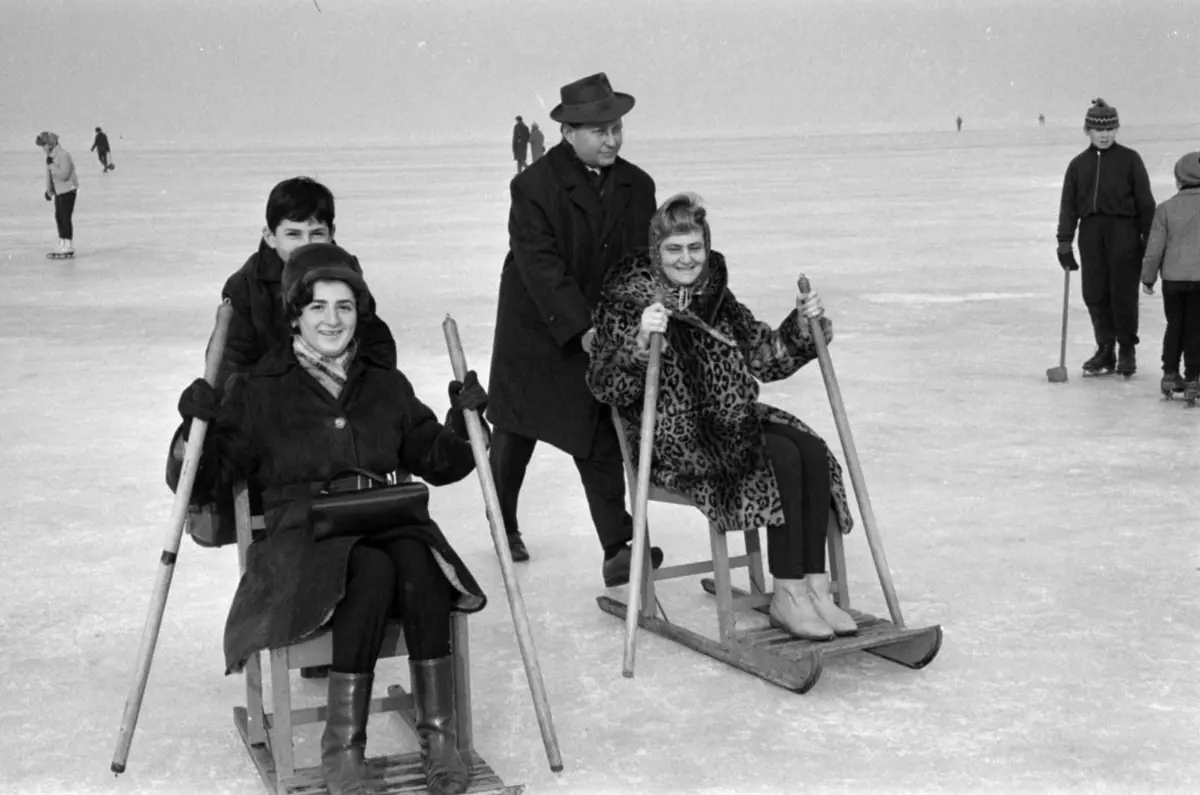
Helyszín címkék:
Fakutya (sledge) and ice sails, or fun retro winter toys
Szabó Sára
Ice sailboat
Ice-sailing was not a winter game or sport for small children, but rather for adults and grown-ups, invented in the 17th century for commercial purposes. The idea was to attach skates to the bottom of ships to facilitate waterborne trade between ports on frozen rivers. By the 19th century, these sailboats were modernized and became more and more common all over the world, and by the end of the 19th century, they reached Hungary. In those days, the ice thickness of Lake Balaton was 25-30 cm, which was sufficient for this winter sport, which has become fashionable, to be practised without any problems. Associations were formed, competitions were organised, and Lake Balaton flourished in winter for those who wanted to try out what it was like to slide on a sailboat on the frozen lake.
Nowadays, it’s getting harder and harder to indulge in the love of ice in our country, the last time the Hungarian sea was frozen thick enough was in 2017. In that year, it was possible to cross Lake Balaton between Badacsony and Fonyód, and the event was met with great interest.
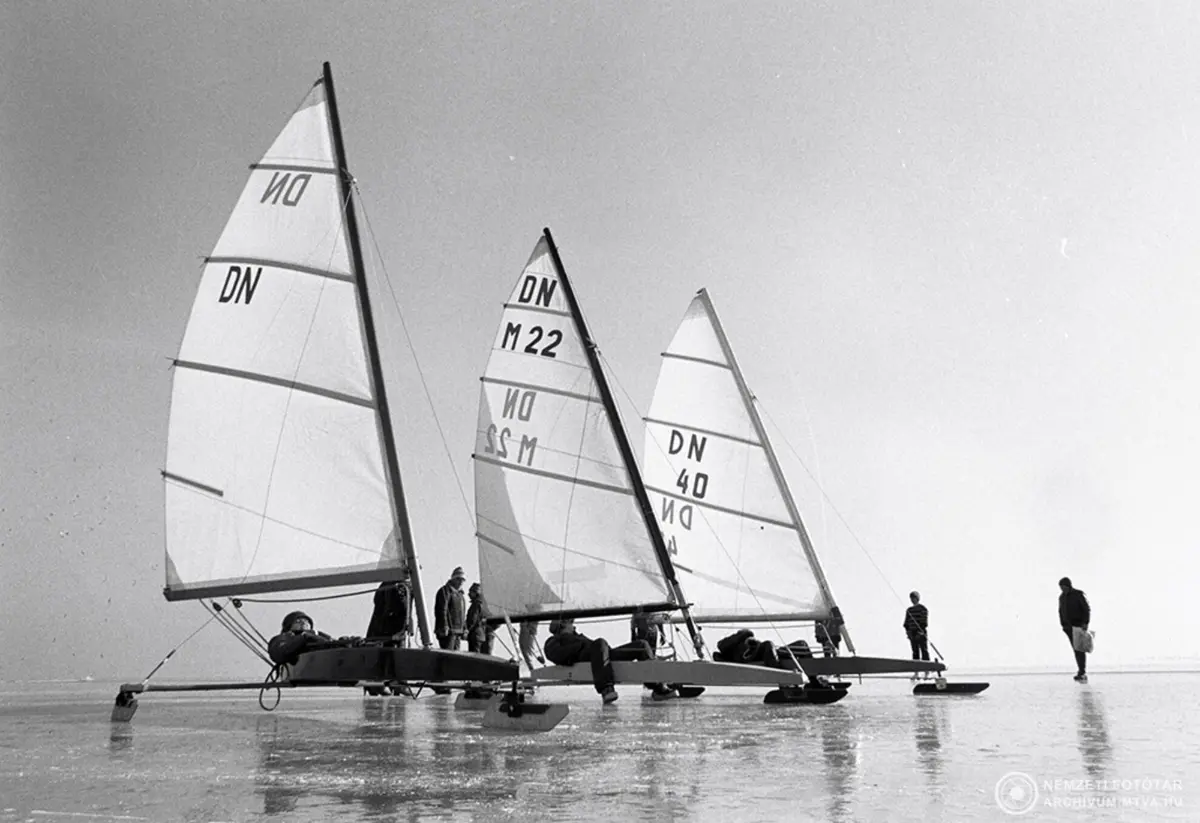
Fakutya (Wooden ice sledge)
But what does wooden ice sledge mean? There is no need to think of any kind of wooden animal, as this is simply a chair attached to a ploughshare, which could be pushed across the ice by hand using two pointed sticks. As the famous Hungarian writer Kosztolányi wrote: “Your dignity will not be harmed. You are human. Therefore, you can laugh like a Cheshire cat.” (with the word ‘fakutya’ used in the original Hungarian text). It has become a popular saying, because the ‘fakutya’ is a wooden boot puller with a branch resembling a gaping mouth, which is placed between the heels of the boots, so it should not be confused with the winter toy that was once very popular. At that time, when the winters were still cold and the waters of Lake Balaton were frozen, there were plenty of opportunities for playing with the ‘fakutya’, and it became a popular winter sport in our country, too.
Ródli (sled)
You might be more familiar with this winter game by its modern name, as the snow sled is still very popular with children and even adults as soon as the first permanent snow falls. You don’t need anything but snow, just a big hill, a jacket and gloves, and a wooden sled that you can sit on alone or with two people, and with a well-directed push, this wooden, skid-proof toy can slide down. Better known as a sledge by today’s kids, it’s easy to get and, weather permitting, can be tried almost anywhere with a slope.
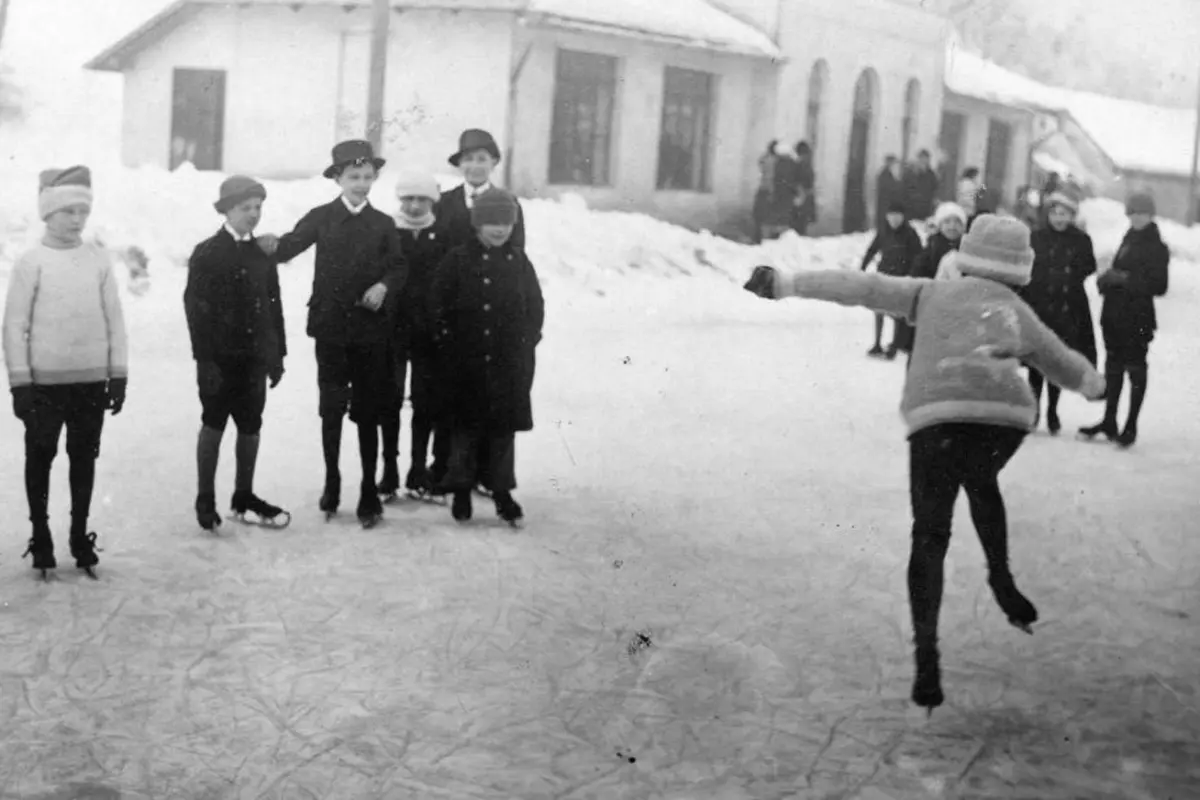
Ice skating, ice hockey
These winter sports, still very popular today, used to look different. While today it is almost only possible to skate on artificial ice rinks, back then the lakes froze over more easily and quickly, and skates were brought out almost immediately, as people were eager for the first snow to fall, the first frost to arrive, and the opportunity to go sledding, skating, skiing, hockey. In the cities, where there was no natural standing water, the tennis courts were often flooded, and then the skates were put on feet until the ice froze.
Although not specifically on the ice of Lake Balaton, we heartily recommend the open skating rink at the foot of Szigliget Castle, where it’s pleasant to slide around in the colder months.
Snowball fights, snowballing
Magical is the winter, the quiet calm of the first snow. Today, few children get to experience what it’s like to make a snow angel, but in our grandparents’ childhoods, it was a different story, with heavy snowfalls providing an easy setting for huge snow battles. They could play in teams, individually or in groups, and the aim, as in dodgeball, was to hit each other with as many balls as possible. Children used to play like this with great laughter, but nowadays they just hope for enough blessings from heaven.
